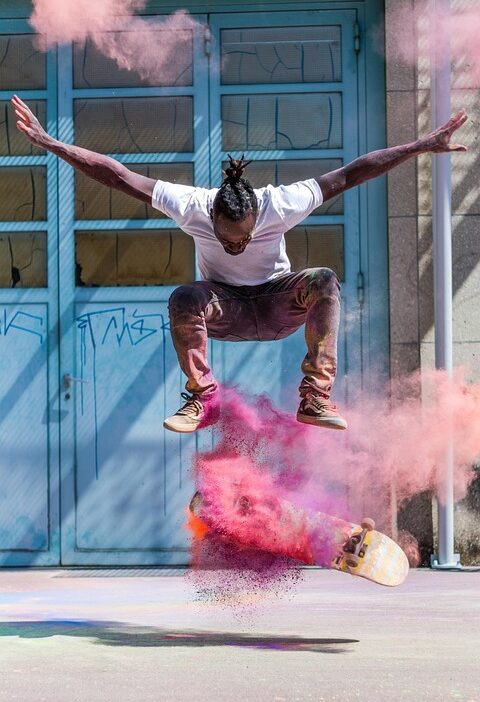Skateboarding, a subculture that started on the sun-drenched streets of California in the late 1940s and early 1950s, has transcended its humble origins to become a global phenomenon influencing fashion, art, music, and even lifestyle. The evolution of skate culture is a testament to the resilience and creativity of its community, as well as a reflection of broader societal changes.
The Birth of Skateboarding
The origins of skateboarding can be traced back to surfers in California who sought to replicate the feel of riding waves on land. By attaching roller skate wheels to wooden planks, they created a makeshift board that allowed them to "surf" the streets. This newfound activity quickly gained traction, attracting a diverse group of skaters and leading to early competitions and exhibitions.
Street Cred: The Rise of Street Skating
As the 1960s and 1970s progressed, skateboarding began to evolve. The introduction of urethane wheels in the 1970s significantly improved the performance of skateboards, allowing skaters to navigate rougher terrain and perform more complex tricks. This era saw the emergence of street skating—a style characterized by navigating urban landscapes using curbs, rails, and steps as obstacles.
The 1980s marked a turning point: skateboarding was no longer just a fringe pastime but had entered mainstream culture thanks to influential skaters like Tony Hawk, who brought prominence to the sport through media appearances and competitions. Skate videos, particularly with the rise of VHS, played a crucial role in showcasing streets as the ultimate playground for skaters.
The Golden Age: The Skate Park Boom
As street skating gained momentum, the need for dedicated spaces became apparent. In the 1980s and 1990s, skate parks began to pop up across the United States. These parks provided a safe environment for skaters to hone their skills while fostering a sense of community among participants. Iconic examples include the Venice Skate Park and the infamous Love Park in Philadelphia, both of which became cultural landmarks for skaters.
During this period, skateboarding became increasingly intertwined with counterculture and youth movements. The punk rock and hip-hop scenes provided both the music and the ethos that shaped skate culture. The skater’s identity became more than just a hobby; it was a lifestyle defined by rebellion, creativity, and freedom of expression.
The New Wave: Digital Age and Globalization
As the 2000s rolled in, skateboarding embraced the digital age. Social media platforms like YouTube allowed skaters to share their videos globally, transforming how skaters interacted with one another. The advent of online tutorials made it easier for newcomers to learn tricks, leading to a surge of interest in skateboarding from diverse demographics.
Globalization further expanded the skateboarding community. The rise of international competitions and the involvement of brands like Nike and Adidas made skate culture a global enterprise. As skateboarding found its way into different countries, local styles and influences began to blend, creating a rich tapestry of global skate culture.
The Olympics and Mainstream Recognition
The inclusion of skateboarding in the Tokyo 2020 Olympics marked a defining moment in the sport’s trajectory. It introduced skateboarding to millions who had never experienced its thrill, but it also sparked debates within the skate community about commercialization and authenticity. While some embraced the opportunity for mainstream recognition, others worried it would dilute the culture’s roots.
The Future of Skate Culture
Looking ahead, skate culture appears poised for continued evolution. The rise of electric skateboards and new technologies will inevitably shape the sport’s future. Moreover, the increasing emphasis on inclusivity is bringing new voices and experiences into the fold, with women in skateboarding gaining prominence and representation.
Community initiatives and organizations are also focusing on making skateboarding accessible to underrepresented groups, ensuring that the culture remains vibrant and diverse.
Conclusion
From its beguiling roots as a pastime for surfers to becoming a global powerhouse of creativity and self-expression, the evolution of skate culture has been anything but linear. It reflects broader societal trends while maintaining a strong sense of community and individuality. As skateboarding continues to evolve, its core values of passion, creativity, and rebellion remain intact, ensuring that the streets—and now skater parks—will always have a place for those daring enough to ride the wave.


